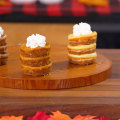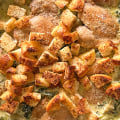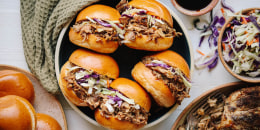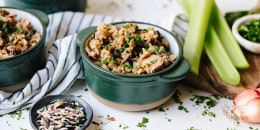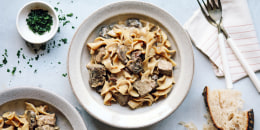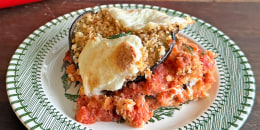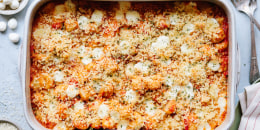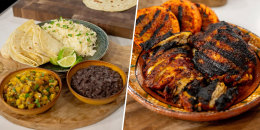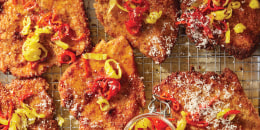Chef notes
Browse and save TODAY's most popular recipes of 2023.
Found in and around Rome, arrabbiata is relatively tame compared to the version we serve at Mother Wolf, which is very much the spice level found in LA — "troppo diavolicchio" or "too much chili." We use a chili oil called "olio santo," or holy oil, made from a blend of different chiles that gives this pasta a round, complex warmth.
Did you make this recipe? Show us! Your dish may be featured on the TODAY Show.
Ingredients
- 1 cup sunflower seed oil
- 1 cup extra-virgin olive oil
- 2-4 bird's-eye chilis, smashed
- 1 teaspoon crushed red pepper flakes
- 1 teaspoon dried chile de árbol, broken into pieces
- 2 red jalapeños, chopped or sliced
- 1/2 teaspoon gochugaru (Korean red chili flakes)
- 1 pound rigatoni
- 3 tablespoons extra-virgin olive oil
- 3 tablespoons olio santo (recipe above)
- 5-6 medium cloves garlic, sliced
- 6-8 bird's-eye chilis, finely chopped
- 2 tablespoons finely chopped parsley
- 2 pints tomato passata
- salt, to taste
- 3 tablespoons grated pecorino romano, divided, plus extra for garnish
Preparation
For olio santo:
1.In a heavy-bottomed saucepot over medium heat, warm the sunflower and olive oils.
2.Warm the oil to 200 F; use a thermometer to keep track of the oil temperature.
3.Once the oil is hot, add all the chilis except the gochugaru.
4.Remove the pan from the heat and allow the oil to cool to room temperature, about 30 to 45 minutes.
5.Once cool, add the gochugaru.
6.In a high-speed blender on max speed, process the oil until very smooth. Strain the oil into your chosen container.
For arrabbiata pasta:
1.In a heavy-bottomed pot, on high heat bring water to a rolling boil.
2.Season the water with salt so that it tastes like a highly seasoned soup (not like the ocean).
3.Drop the pasta into the water, allow it to relax and give it a stir to avoid sticking. Al dente is a spectrum and based on personal preference. If you are using dried pasta, follow the guidelines on the box regarding cook time. If you are using fresh pasta, your cook time will vary but regardless, throughout the cooking process make sure to test the pasta to your desired level of al dente.
4.In a large pan on medium-low heat, warm the olive oil and olio santo.
5.Once the oil is warm and shimmering, add the garlic and toast it in the oil until golden in color, approximately 1 to 2 minutes. Add the chilis and parsley and sweat in the oil until the parsley is bright green and chilis are aromatic, about 30 seconds to 1 minute. Next, add the tomato passata and a big pinch of salt. Increase the heat to medium and bring the sauce to a low simmer for about 2 to 3 minutes while the pasta finishes cooking.
6.Once the pasta is cooked, remove it with a spider or strainer and add it to the sauce.
7.With a rubber spatula or spoon, vigorously work the pasta by stirring and tossing the pasta and sauce together.
8.Sprinkle in half of the pecorino and vigorously stir to emulsify until the pasta looks creamy and coats the rigatoni. If the pasta looks dry, add a splash of the pasta water to the pan to moisten and continue to agitate. If it looks too loose, reduce the sauce a bit while stirring and sprinkle in a touch more pecorino.
9.Taste the final sauce and adjust the seasoning with salt if needed. Bear in mind that the pecorino is highly seasoned and will increase that saltiness of the final dish.
10.With a spoon, remove the pasta and sauce from the pan and arrange onto warmed plates. Using your rubber spatula, scrape any excess sauce out of the pan and add over the top. Generously sprinkle pecorino over the top of the pasta. Serve immediately.



